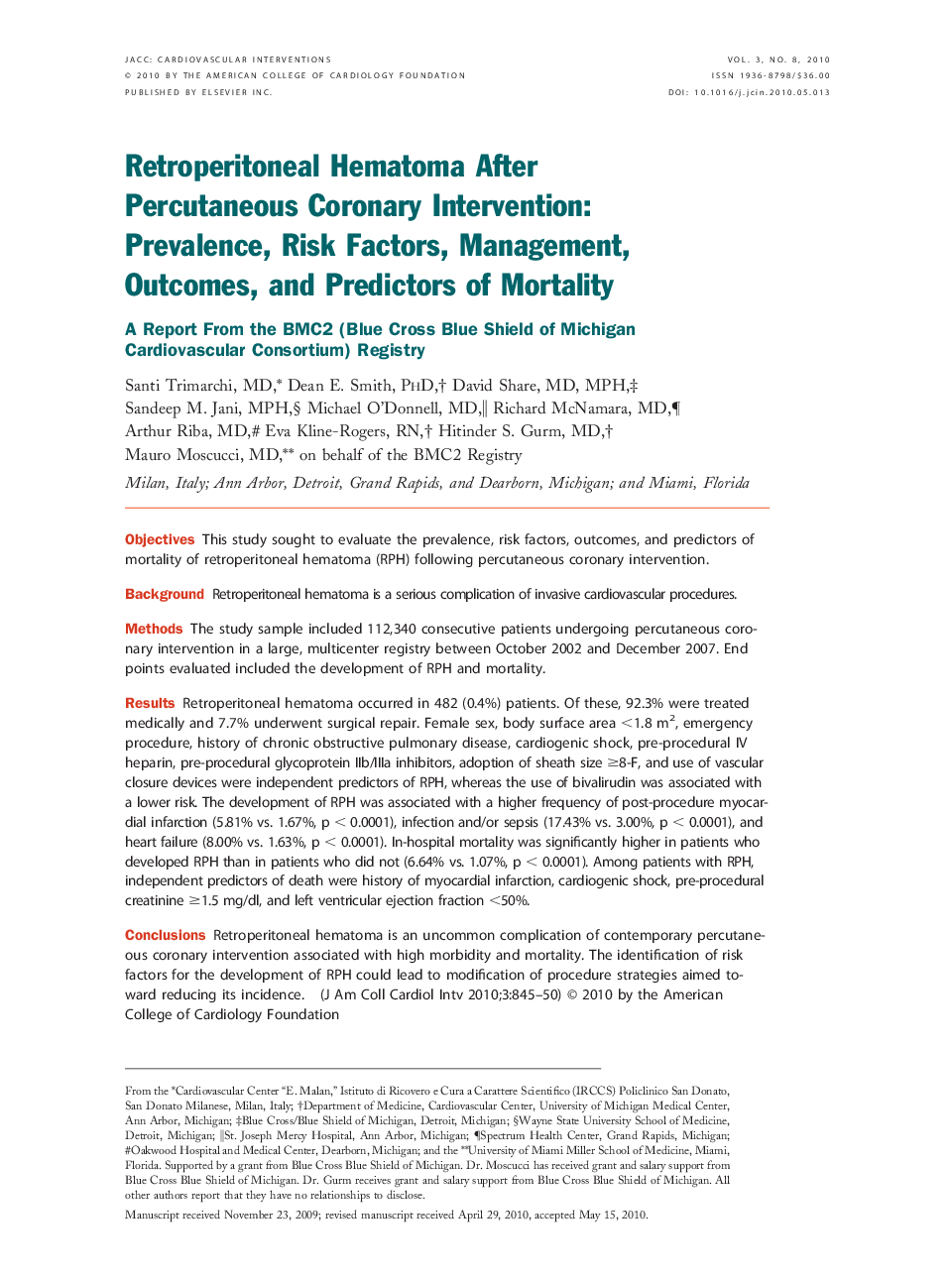| کد مقاله | کد نشریه | سال انتشار | مقاله انگلیسی | نسخه تمام متن |
|---|---|---|---|---|
| 2941811 | 1177087 | 2010 | 6 صفحه PDF | دانلود رایگان |

ObjectivesThis study sought to evaluate the prevalence, risk factors, outcomes, and predictors of mortality of retroperitoneal hematoma (RPH) following percutaneous coronary intervention.BackgroundRetroperitoneal hematoma is a serious complication of invasive cardiovascular procedures.MethodsThe study sample included 112,340 consecutive patients undergoing percutaneous coronary intervention in a large, multicenter registry between October 2002 and December 2007. End points evaluated included the development of RPH and mortality.ResultsRetroperitoneal hematoma occurred in 482 (0.4%) patients. Of these, 92.3% were treated medically and 7.7% underwent surgical repair. Female sex, body surface area <1.8 m2, emergency procedure, history of chronic obstructive pulmonary disease, cardiogenic shock, pre-procedural IV heparin, pre-procedural glycoprotein IIb/IIIa inhibitors, adoption of sheath size ≥8-F, and use of vascular closure devices were independent predictors of RPH, whereas the use of bivalirudin was associated with a lower risk. The development of RPH was associated with a higher frequency of post-procedure myocardial infarction (5.81% vs. 1.67%, p < 0.0001), infection and/or sepsis (17.43% vs. 3.00%, p < 0.0001), and heart failure (8.00% vs. 1.63%, p < 0.0001). In-hospital mortality was significantly higher in patients who developed RPH than in patients who did not (6.64% vs. 1.07%, p < 0.0001). Among patients with RPH, independent predictors of death were history of myocardial infarction, cardiogenic shock, pre-procedural creatinine ≥1.5 mg/dl, and left ventricular ejection fraction <50%.ConclusionsRetroperitoneal hematoma is an uncommon complication of contemporary percutaneous coronary intervention associated with high morbidity and mortality. The identification of risk factors for the development of RPH could lead to modification of procedure strategies aimed toward reducing its incidence.
Journal: JACC: Cardiovascular Interventions - Volume 3, Issue 8, August 2010, Pages 845–850